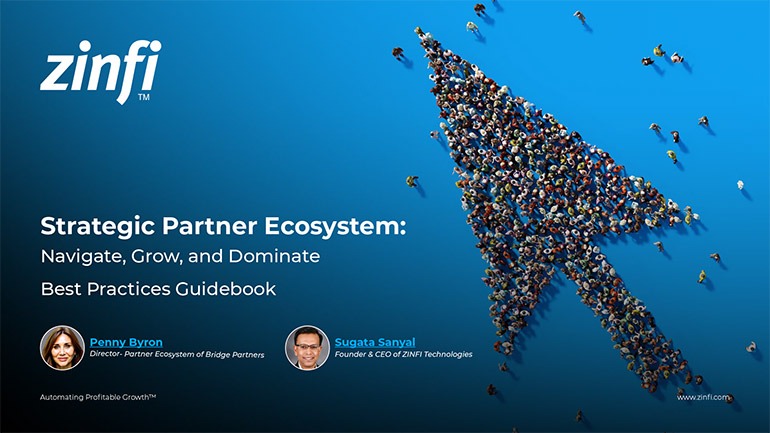Glossary - What is - Collaborative Marketing Campaign
What is a Collaborative Marketing Campaign?
A collaborative marketing campaign is a strategic alliance between two or more businesses that collectively promote their products or services. This partnership leverages all involved parties’ strengths, resources, and audiences to create a more impactful and far-reaching marketing effort than any company could achieve alone. These campaigns can take various forms, including co-branded content, joint promotions, cross-promotions, or events that feature multiple brands.
Collaborative marketing campaigns are essential for maximizing the combined value of partnerships in the context of partner ecosystem management and partner management automation. Partners can share costs, risks, and benefits by working together, leading to more innovative and effective marketing strategies. Partner management automation tools can streamline the planning, execution, and analysis of these campaigns, ensuring that all partners are aligned and the campaign runs smoothly from start to finish.
Key Takeaways
- Enhanced Reach and Visibility: Collaborative marketing campaigns can significantly extend a company’s marketing efforts. By partnering with other brands, businesses can tap into new customer segments they might not have been able to reach on their own. This expanded reach is particularly beneficial in competitive markets where gaining visibility is crucial.
- Shared Resources and Costs: One of the primary advantages of collaborative marketing campaigns is sharing resources and costs. Partners can pool their marketing budgets, personnel, and resources to create more substantial, high-quality campaigns. This cost-sharing approach allows smaller companies to participate in large-scale marketing initiatives that would otherwise be beyond their financial reach. Explore ZINFI’s Partner Marketing Management.
- Increased Innovation: Combining diverse perspectives and expertise from different companies can spark innovation. Collaborative marketing campaigns encourage creativity as partners brainstorm and develop unique strategies that combine their strengths. This innovation can lead to more compelling and memorable marketing initiatives. Learn about fostering innovation in marketing with ZINFI’s Partner Relationship Management.
- Stronger Relationships: Collaborative marketing efforts often strengthen the relationships between partnering companies. Working closely on joint campaigns builds trust, communication, and mutual respect. These stronger relationships can lead to more strategic partnerships and long-term collaborations.
- Data and Insights Sharing: Partners involved in collaborative marketing campaigns can benefit from shared data and insights. By combining their market research, customer data, and campaign analytics, partners can gain a more comprehensive understanding of their target audiences and the effectiveness of their marketing efforts. This data-sharing can lead to more informed decision-making and improved campaign performance.
Summary of Key Takeaways:
Collaborative marketing campaigns offer numerous benefits, including enhanced reach and visibility, shared resources and costs, increased innovation, stronger relationships, and valuable data and insights sharing. These advantages make collaborative marketing an effective strategy for businesses to amplify their marketing efforts and achieve tremendous success. By leveraging the combined strengths of multiple partners, companies can create more impactful campaigns and build lasting relationships. For more information on the benefits of collaborative marketing, visit ZINFI’s extensive range of partner management solutions.
Key Examples
- Automotive Manufacturing: Manufacturers often collaborate with technology companies to create co-branded marketing campaigns in the automotive industry. For instance, an automaker might partner with a GPS technology company to promote a new vehicle model featuring advanced navigation systems. This collaboration enhances the car’s appeal and introduces the technology company to a broader audience.
- Consumer Electronics: Consumer electronics companies frequently engage in collaborative marketing campaigns to showcase the interoperability of their products. For example, a smartphone manufacturer might collaborate with a smart home device company to demonstrate how their products work seamlessly. Such campaigns highlight the benefits of an integrated ecosystem, attracting tech-savvy consumers.
- Energy Production: Energy companies can partner with environmental organizations to promote sustainable energy solutions. A collaborative marketing campaign might involve co-branded content that educates consumers about the benefits of renewable energy sources and how they can reduce their carbon footprint. This campaign boosts the energy company’s reputation and advances environmental goals.
- Financial Services: Banks and fintech companies often collaborate on marketing initiatives in the financial sector. For example, a bank might partner with a fintech startup to promote a new digital banking service. By combining their expertise and resources, they can create a campaign that appeals to traditional banking customers and tech-savvy individuals looking for innovative financial solutions.
- Food and Beverage: Food and beverage companies can collaborate on marketing campaigns to reach a wider audience. For example, a beverage company might partner with a snack food brand to create a joint promotion highlighting how their products complement each other. This collaboration can increase sales for both companies as they tap into each other’s customer base.
- Healthcare Services: Healthcare providers can collaborate with pharmaceutical companies to promote health and wellness initiatives. A hospital might partner with a pharmaceutical company to create a campaign that educates the public about a specific health condition and the available treatments. Such campaigns can improve patient outcomes and enhance the reputations of both organizations.
- Information Technology: In IT, software companies often collaborate with hardware manufacturers on marketing campaigns. For example, a software company might partner with a computer manufacturer to promote a new line of laptops pre-installed with the latest software. This collaboration benefits both parties by offering a complete solution to consumers.
- Pharmaceutical Development: Pharmaceutical companies can collaborate on marketing campaigns to raise awareness about new medications. For instance, two pharmaceutical companies might join forces to promote a new drug that combines their research efforts. Such campaigns can accelerate the adoption of new treatments and improve patient care.
- Retail Industry: Retailers frequently use collaborative marketing campaigns with product manufacturers. For example, a retail chain might partner with a clothing brand to create an exclusive fashion line promoted through joint marketing efforts. This collaboration can drive traffic to the retailer’s stores and boost sales for the clothing brand.
- Telecommunications: Telecommunications companies often collaborate with content providers to offer bundled services. For example, an internet service provider might partner with a streaming service to create a campaign promoting a package deal. This collaboration can attract new customers and increase both companies’ value propositions.
Conclusion
Collaborative marketing campaigns are a powerful strategy for businesses across various industries. By partnering with other companies, businesses can enhance their reach and visibility, share resources and costs, foster innovation, strengthen relationships, and benefit from shared data and insights. These advantages make collaborative marketing campaigns effective in achieving goals and driving business growth.
In the automotive industry, collaborative marketing can showcase the integration of advanced technologies, appealing to tech-savvy consumers. Consumer electronics companies can highlight the interoperability of their products, while energy companies can promote sustainable solutions. Through collaborations, financial services can offer innovative digital banking options, and food and beverage companies can create joint promotions to attract a broader audience. Healthcare providers and pharmaceutical companies can educate the public about health conditions and treatments, and IT companies can offer complete solutions through hardware and software partnerships. Retailers can boost sales with exclusive fashion lines, and telecommunications companies can attract customers with bundled services.
Collaborative marketing campaigns can create more impactful and successful marketing initiatives by leveraging the strengths and resources of multiple partners. These campaigns are essential for businesses looking to maximize their marketing efforts and succeed tremendously in today’s competitive market. For more insights and tools to manage collaborative marketing campaigns, visit ZINFI’s extensive range of partner management solutions.
Associated Keywords:
- Collaborative Marketing
- Partner Ecosystem Management
- Marketing Automation
















